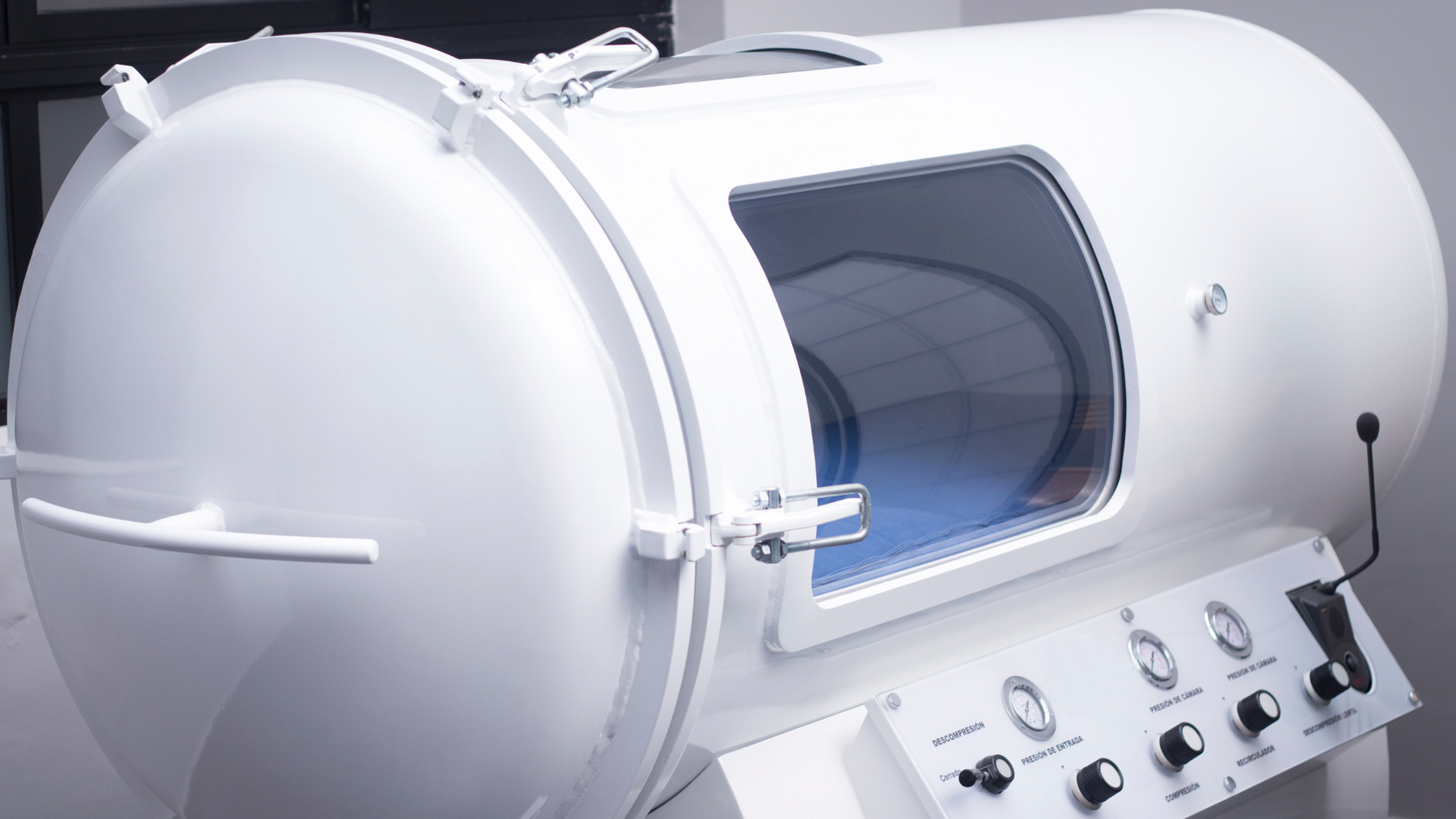888-963-9454
Mon-Sun: 9am-5pm CST
888-963-9454
Mon-Sun: 9am-5pm CST

Experience the health perks of Hyperbaric Oxygen Therapy (HBOT) with 1.3 ATA hyperbaric benefits. This gentle treatment involves breathing pure oxygen in a special chamber with a little more pressure than what you feel in the air around you. It helps heal your body faster and fights off infections.
While some treatments use higher pressure, 1.3 ATA is a sweet spot that's effective and recognized by the FDA for its safety. It’s great because it lowers the risk of having too much oxygen in your body while still providing plenty of oxygen to where it’s needed.
Researchers and doctors stand behind using 1.3 ATA in HBOT. It's been shown to help with certain serious health issues. Plus, the treatment can be adjusted for each person, which makes it a flexible option for different medical needs. Want to learn more about how this can help you or your loved ones? Keep reading to get the full story on HBOT’s benefits.
Hyperbaric oxygen therapy at 1.3 ATA, equivalent to a pressure found at sea level, offers distinct health advantages by enhancing the oxygen saturation in your body. This technique, often used for various medical purposes, utilizes a pressurized chamber to elevate oxygen levels and improve healing processes.
Also read our guide: Hyperbaric Oxygen Therapy at Home: How to Get Started

Wound recovery is significantly expedited under increased pressure, as oxygen-rich plasma can reach areas in the body that are difficult to penetrate otherwise. Your skin and tissue receive more oxygen, which promotes faster and more effective healing, especially in non-healing wounds that challenge typical healthcare strategies.
Hyperbaric oxygen therapy helps promote angiogenesis, the development of new blood vessels, and improves circulation. By breathing pure oxygen in a pressurized environment, your body can improve tissue oxygenation, thus enhancing your overall physiological function.
By significantly increasing plasma oxygen levels, hyperbaric therapy creates an environment that both inhibits bacterial growth and assists your immune system in fighting off infections more effectively. Inflammation and associated swelling are also reduced, promoting a faster recovery from various conditions.
Patients with chronic medical conditions, such as diabetic ulcers or radiation necrosis, may find improved healing with 1.3 ATA hyperbaric therapy. It encourages the oxygenation of compromised tissues, aiding in the management and recovery from these long-term health issues.

Hyperbaric therapy has been shown to provide a beneficial effect on brain function. It can lead to neuroplastic changes that improve cognitive abilities and help manage symptoms of conditions such as stroke and traumatic brain injury by increasing cerebral blood flow and oxygen to the brain.
For divers suffering from decompression sickness, the controlled pressurized environment can alleviate symptoms by helping to reduce bubbles of nitrogen that form in the bloodstream during rapid ascents, known as 'the bends.'
1.3 ATA oxygen therapy helps purge toxic substances, such as carbon monoxide, from your bloodstream. It competes with toxic gases, enhancing the clearance and minimizing toxicity faster than your body would naturally.

Evidence suggests hyperbaric oxygen can mitigate symptoms of psychological conditions, such as PTSD, anxiety, and depression. The additional oxygen may promote a healthier environment for the central nervous system, potentially leading to improved patient outcomes.
HBOT at 1.3 ATA is great for more than just quick fixes; it can also really help with long-term health problems. This includes making healing faster for people with things like diabetes-related wounds or damage from x-ray treatments. It's also showing promise in helping brain function for those with injuries or other conditions affecting the brain.
This kind of therapy has many pluses. It not only helps divers recover from the bends but also helps clean out poisons from the body. It might even help with mental health issues.
As more studies show how well it works, HBOT is getting more popular for treating various health issues. Want to try it for yourself? Check out our collection of hyperbaric chambers and find your path to better health.
Mild HBOT, like that at 1.3 ATA, usually utilizes lower pressures than traditional HBOT but still delivers oxygen effectively. It can be a cost-effective option, with lower safety risks related to fire or toxicity, while traditional HBOT often operates at higher pressures and may provide more oxygen to the tissues, which could be necessary for certain medical conditions.
Yes, therapy at 1.3 ATA can improve recovery from several medical conditions. It has been shown to be beneficial in treating crush injuries, osteomyelitis, and sudden hearing loss, among other conditions. The lower pressure can still provide therapeutic benefits while minimizing potential side effects associated with higher pressures.
In hyperbaric therapy sessions, 1.3 ATA is equivalent to being approximately 10 feet (3 meters) underwater. This is a commonly used pressure setting in clinical hyperbaric treatments that safely increases tissue oxygenation.
There are established protocols for administering HBOT at 1.3 ATA, which often include breathing 100% oxygen for a prescribed duration. The typical timing may vary based on the condition being treated, but sessions may last around 90 minutes, and the frequency of therapy will depend on the specific medical condition and protocol followed.
Hyperbaric oxygen therapy at 1.3 ATA is generally considered to be less intense than treatments at pressures greater than 2 ATA. However, it may be equally beneficial for certain conditions and is associated with fewer risks and side effects.
Higher pressure treatments may reach deeper tissues and are indicated for more severe cases. On the other hand, 1.3 ATA treatments provide a balance between efficacy and safety.
The information in the Website is provided “as is” and for general information only. It is not intended as medical advice and should not be relied upon as a substitute for professional consultation with a qualified healthcare provider familiar with your individual medical needs.